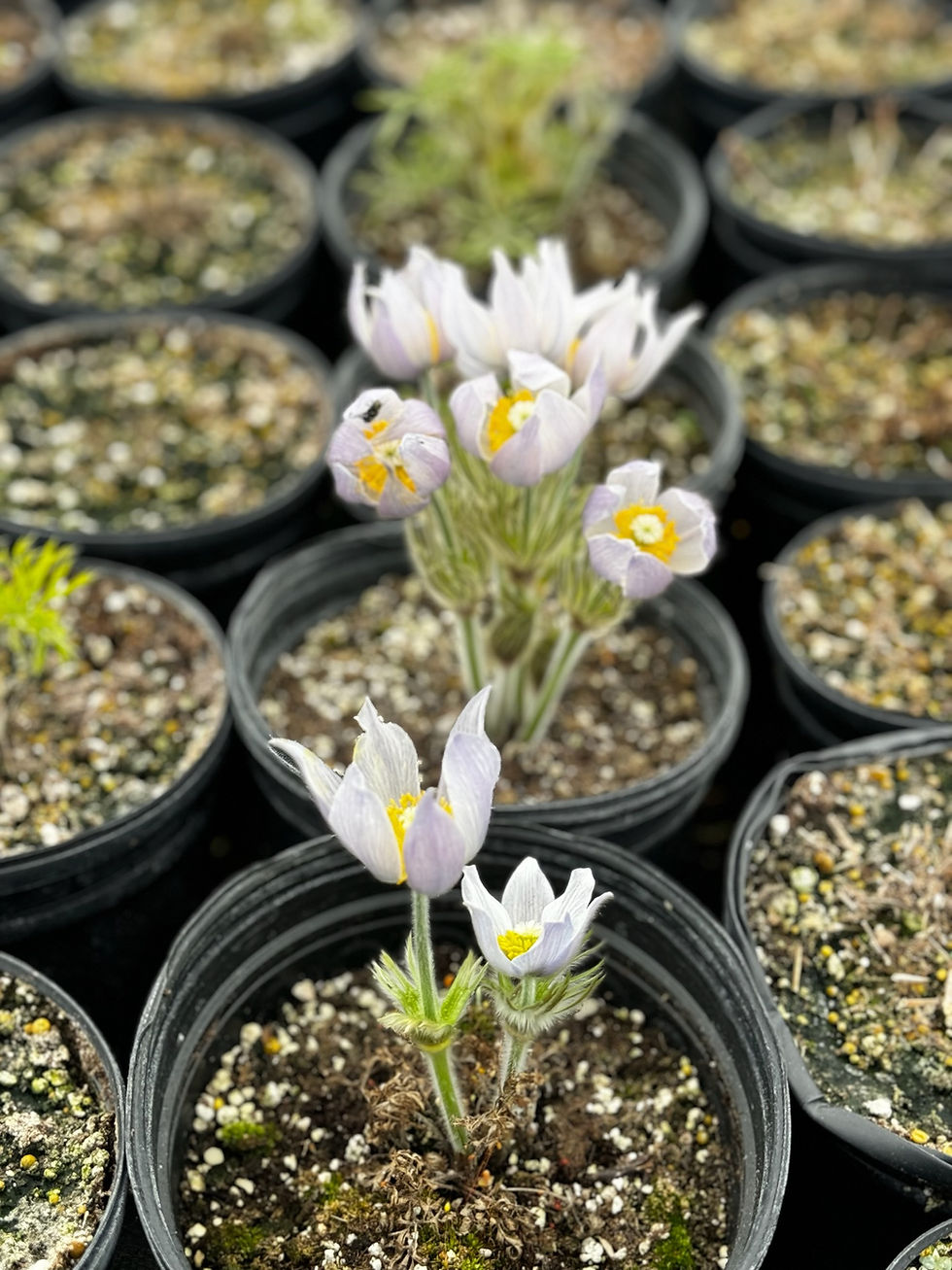Featured Plant - Pasque Flower
- Aimee

- Apr 5, 2024
- 2 min read
Updated: Jan 6

The chilly spring wind blows on the delicate Pasque Flower, Pulsatilla patens, a member of the Buttercup family. The Latin word, "Pulsatilla," describes the motion of swaying, whereas "pasque" comes from old French, referring to the spring bloom time. This lovely lavender-colored flower is also known as Prairie crocus, Easter Flower, or Wind Flower. It is an early bloomer, starting in April and continuing through August, however, its longevity depends on elevation and cooler latitudes. It commonly grows in temperate and cooler regions, such as South Dakota, where it is the state flower. It can be found in prairie fields, subalpine meadows, open slopes, and forests.

(Photos provided by Great Bear Native Plants, Map provided by USDA-NRCS)
The Pasque Flower is a strong overwintering perennial, often emerging before the snow has fully melted While buds forms early in the plant's life cycle, this plant can also be identified by their stems, which are usually only 4-5” tall with small silver hairs covering the stock. While in bloom, the flower is made up of five to eight individual deep-purple to light-purple petal-like sepals. The center of the flower is about 100 to 200 arranged yellow stamens and in the center is a singular bundle of many pistils. This makes Pasque flowers a source of early-season nectar for honeybees and native bees. After the bloom, the plant matures to 8-12” tall and fluffy seedheads replace the purple flowers. These low-growing plants are suitable for rock gardens, borders, or alpine beds. They combine well with spring-flowering bulbs and ground covers.
Planting Notes
Pasque flower grows best in full sun or part sun, and prefer rich or poor soil as long as it drains well. Pasque Flower is calciphilic and needs an alkaline soil with a pH of 7 to 8. Both overwatering and underwatering can be problems for Pasque flowers, but overwatering tends to happen more often. At the base, water the plant once or twice a week.
Planting Buddies
Sticky geranium (Geranium viscosissimum)
Common Blue Violet (Viola sororia)
Missouri Evening Primrose (Oenothera macrocarpa)
Blanket Flower ( Gaillardia aristata)
All of these can be found here at Great Bear Native Plants!
Sources:




Comments